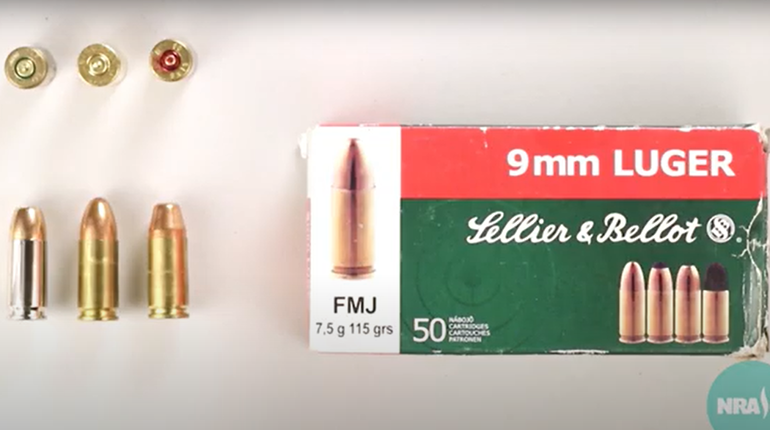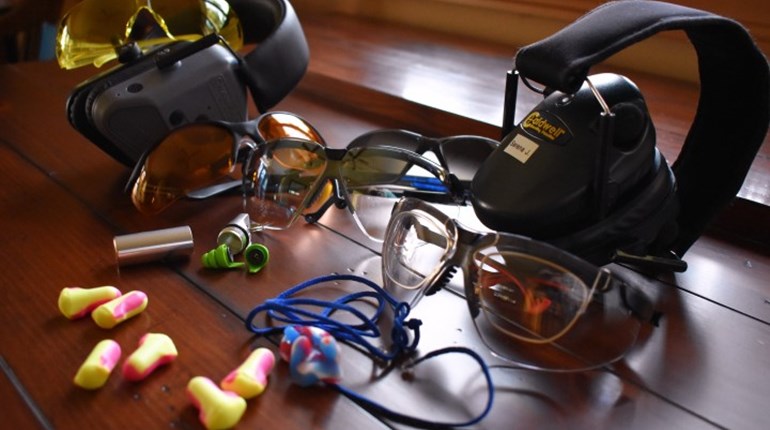
If you’re a firearms enthusiast and you have young kids, you’re probably hoping that they’ll grow up to love shooting like you do. Even if they don’t have a lot of interest, if there are firearms in your home, your kids should be educated about basic firearm use and safe handling. With so many things vying for kids’ attention these days, how do you introduce them to shooting in a way that won’t scare them off or bore them to tears?
Take it from the mom of a competitive youth shooter—there’s a right way and a wrong way to do this. Here are six tips for doing it the right way.
Wait Until They’re Ready (But Not too Long)
Every kid develops at a different rate, physically and emotionally. I know kids who were shooting so early that they killed their first deer at age five, and others who didn’t care much about shooting until high school. What age to start introducing firearms is a judgement call you’ll have to make.
If you have preschool- and school-age children who show an interest in firearms, go ahead and let them look at and handle your guns at home (unloaded, obviously, and under your close supervision). This develops a familiarity with guns, allows you to introduce the principles of gun safety, and satisfies a kid’s curiosity, hopefully fanning the flame of interest.
When my daughter was five or six, she’d stand in front of the gun safe every time we opened it, playing the “What’s that one? Can I touch it?” game of never-ending questions. We let her hold or touch every one she wanted to see. Patience is your friend here.
You know your child best, so you’ll know when they’re ready to go to the range and actually start shooting. Don’t rush it, but do introduce the subject while they’re quite young to start developing the interest. If you wait until they’ve developed other hobbies or an Xbox addiction, there will be more competition for their time and attention.
Don’t Push
Some kids can’t get enough shooting. Some enjoy it on occasion, and some have no interest at all. If they’re not into it, don’t force it. Making a kid go to the range when they’re not excited about it is going to be an exercise in frustration and a waste of ammo.
If your child likes the range but doesn’t want to go as often as you do, don’t take it as an insult or a sign that they’re not interested. Let them determine their own level of participation.
What if they’re afraid of the noise or the recoil? Ideally, you won’t be using a gun with much or any recoil (see tip #4 below), and good ear protection will mitigate the noise. It will probably be helpful for your child to watch you shoot a few times before you put them behind the trigger. Watching Mom shoot will remove a lot of the nerves that come from not knowing what’s about to happen.
Drill Safety
You’ll lose a kid’s attention if you launch into long lectures, but the safety talk needs to happen early and often, long before your child’s first trip to the range. Introduce the four rules of gun safety at a very early age. The rule in my house from the time she was in diapers running around with toy pistols was always “We don’t point guns at people,” which meant I had to shut Grandpa down when he wanted to play cops and robbers with the two-year-old. It was a very early introduction to the formal rule of not letting your muzzle cover anything you’re not willing to destroy.
It goes without saying that safety is your first priority at the range. In addition to drilling the four rules and staying vigilant, you also need to impress upon the child (in an age-appropriate way) what firearms are capable of and what the consequences of improper use can be. Shooting a milk jug, a watermelon or something else that will leak profusely or show lots of damage is a good way to drill home the idea that this is serious business and people can be hurt if we don’t take responsibility for safety.
Use the Right Guns
A BB gun seems like the logical gun to start a kid off with, because there’s no recoil and virtually no noise. A pellet gun or air rifle is a fine choice if you can find one that’s short-stocked enough that the child can shoot it properly.
If not, go straight to a starter .22LR like the Cricket or the Savage Rascal. The Rascal was a favorite in our family because it has an excellent trigger and it’s accurate, which is important for a ki —hitting is fun; missing is not. The Cricket and the Rascal are both single-shot bolt actions, allowing a kid to learn how to operate a bolt while teaching one-shot-make-it-count patience. Plus, they come in fun colors and left-handed options, and they’re sized just right for young children. Kids as young as preschool age can shoot one of these rifles easily.
Long guns are easier for the supervising parent to keep a handle on, safety-wise, so save the handguns for a little later after the child has shot rifles several times and has demonstrated that they can follow safety rules. When it’s handgun time, start with a .22LR if possible.
Make It Fun
Short, fun range sessions are the name of the game when it comes to getting kids hooked. Punching paper is all right, but anything that gives a bigger reaction will get a kid’s juices flowing. Plastic water bottles, cans of shaving cream, balloons, aluminum cans, and other items that pop, make noise or fall over give a kid instant gratification. Who doesn’t love shooting leftover Halloween pumpkins and exploding water bottles? Steel targets that fall down or flip around, like a dueling tree, are great options that provide an instant reaction.
No matter how much fun you’re both having, pack it up before your child starts getting bored or distracted. Leaving on a high note will almost guarantee that they’ll be begging to come back to the range again next time.
Consider a Team
If your kid has shot enough to know that they enjoy it, consider joining a youth team. The Scholastic Clay Target Program (shotguns) and Scholastic Action Shooting Program (handguns and rimfire rifles) allow student athletes as young as elementary school to join a local team and compete at the local, regional and national level. You can find a team here. 4-H teams are available nationwide, and the NRA has a number of youth programs and initiatives as well. Many high schools have a trap or skeet team.
Shooting on a team—whether at a hard-core competitive level or just for weekend fun—lets your son or daughter connect with other kids who have similar interests and provides all the positive aspects of team sports. It’s an excellent way to further develop your child’s shooting skills, keep them engaged regularly, and even earn college scholarships.
Remember, the most important things about introducing a kid to shooting are safety and fun. With the right guns, the right timing and the right training, you can be well on your way to raising a child who is as passionate about the shooting sports as you are.







































